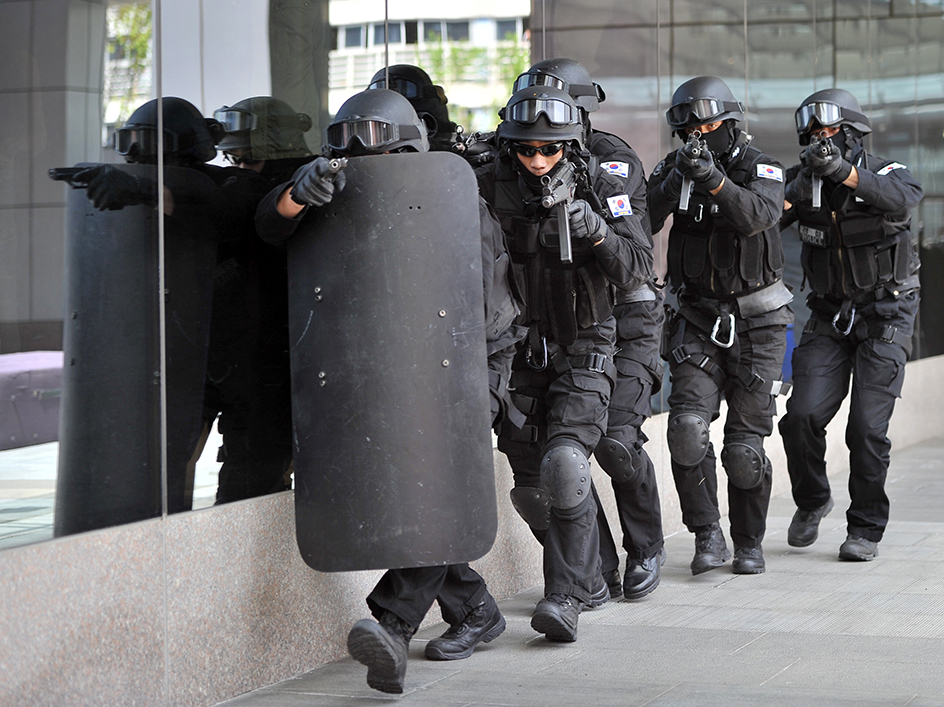S.W.A.T. is a special weapons unit of a police department. The letters stand for either S_pecial _W_eapons and _T_actics or, less frequently, _S_pecial _W_eapons _A_ttack _T_eam. S.W.A.T. teams are part of urban police departments in many countries. The teams may also have different names, such as _special response units, special tactics groups, or tactical operations units. The origin of S.W.A.T. teams is most often traced to efforts by the Los Angeles Police Department to control race riots in the late 1960’s.

S.W.A.T. teams perform a variety of activities that fall outside the skills and routine responsibilities of most police officers. They are typically used for such operations as controlling riots and mobs, responding to hostage crises and bomb threats, and making arrests in situations that involve a high risk for violent confrontation. Officers selected for S.W.A.T. teams receive special training in marksmanship, explosives, and negotiation techniques. Members of these units are equipped with high-powered weapons and protective gear.
S.W.A.T. teams have come under some criticism. For example, some S.W.A.T. teams have overestimated the level of danger in some cases and therefore overreacted. Police officials have also suggested that the officers who first respond to threatening situations may rely too heavily on S.W.A.T. teams. This issue received special attention following the shootings at Columbine High School in Littleton, Colorado, in 1999. In this incident, the shootings were still in progress when the first police officers reached the scene. However, no officers entered the school until after S.W.A.T. teams arrived. First responders to such kinds of situations are now encouraged to intervene before the death toll climbs and not to await the arrival of the S.W.A.T. unit.
